International Whaling Commission meets this week, will they discuss the US whale slaughter? By Jim Lovgren
 The International Whaling Commission [IWC] meets this week from September 23 rd to the 27 th , in Lima Peru. The commission was established in 1946 and is a specialized regional fishery management organization created to provide for the proper conservation of various different Whale species, with the goal of supporting the orderly development of the Whaling industry. It presently has eighty-eight members, including a number of land locked countries. At the time of its formation the world was reorganizing itself after the devastation of World War II. Worldwide food production had suffered enormously over the prior decade of wars, but seafood production was one area that offered immediate returns since most fish stocks globally were not affected by the war and remained healthy. Except for Whales.
The International Whaling Commission [IWC] meets this week from September 23 rd to the 27 th , in Lima Peru. The commission was established in 1946 and is a specialized regional fishery management organization created to provide for the proper conservation of various different Whale species, with the goal of supporting the orderly development of the Whaling industry. It presently has eighty-eight members, including a number of land locked countries. At the time of its formation the world was reorganizing itself after the devastation of World War II. Worldwide food production had suffered enormously over the prior decade of wars, but seafood production was one area that offered immediate returns since most fish stocks globally were not affected by the war and remained healthy. Except for Whales.
For two hundred years fishing vessels hunted down Whales bringing some species to the brink of extinction. Unlike the American slaughter of Buffalo, where they were killed solely for their hide, and the carcass left to rot, the Whaling industry utilized almost every part of these animals, with many indigenous populations being dependent on them as their main food source. The most valued product obtained from Whales though, was their oil, which was used for lubrication and as an energy source to light all types of lamps, among its many uses. With the creation of the internal combustion engine, and discovery and refinement of crude oil, Whale oil became obsolete, which is a fortunate thing, because there were hardly any Whales left to exploit. The International Whaling Commission was tasked with protecting and restoring the various species of Whales, while still allowing the selective harvest of some species by the handful of countries that still engaged in Whaling.
By the 1960’s it was becoming apparent that many Whale species were in desperate stock condition and needed more protection than they were presently receiving. Save the Whales became the motto of a fledgling environmental movement, that would soon become powerful enough to affect national elections. Public shame was thrust upon the few remaining countries that participated in Whaling, and finally in 1982 the IWC voted on a moratorium on all commercial Whaling. A small allotment of a few species of Whales were still allowed to be caught for subsistence by indigenous peoples and for scientific purposes. The Whale populations started to replenish.
In 2018 the IWC completely changed course from their original intent of recovering and managing a sustainable fishery for Whales by approving the Florianopolis Declaration. This action is intended to protect Whales into perpetuity and restore all Whale species to pre-Whaling levels. The IWC has become the guardian angel of marine mammals and has gathered the most comprehensive data in regard to all factors that can affect marine mammals. Over twenty years ago, they acknowledged that man-made noises, from a multitude of different sources, was becoming a serious threat to their goal of protecting and rebuilding the Whale stocks. At that time, a legal battle was being fought between the Natural Resources Defense Council and the US navy over the usage of naval sonar by submarines. This suit was won by the NRDC and established that loud manmade noises from Sonar actually did kill many Whales and marine mammals in a number of different strandings. The US Navy adopted many different mitigation techniques to address the potential harm caused by its usage of sonar.
Unfortunately, research vessels working on locating various natural resources under the seafloor, primarily, oil, didn’t think that their seismic air-gun arrays had any effect on marine life, despite the dead bodies that would wash up on the beach wherever these surveys took place. Naval sonar and seismic air gun arrays operate at the same decibel level [which is measured differently underwater then above ground] between 240 and 260 DB’s. Stands to reason that if naval sonar can kill marine creatures at a certain sound level, then seismic air gun arrays can also. Because of outrage by some environmental NGO’s the oil industry and its research vessel partners did look to address this issue by using new techniques and equipment specifically designed to lower the sound level that they use for under the sea-floor exploration. This involved various forms of sonar and seismic apparatus, such as Sub-bottom profilers, sparkers, pingers and other lower decibel noise makers. Problem solved.
Except marine mammal strandings were still occurring wherever these vessels were operating, which means that the sound level is still too loud. Complicating the issue is that over the last two decades with the proliferation of offshore wind factories being built, under the guise of saving the world from global warming, the research vessels that had been working for the oil companies, were now working for offshore wind companies. This gave them a get out of jail free card from the NGO’s that previously opposed such research because it was benefiting the evil oil companies. Now they were going to save the world, and what’s a few dead Whales anyway? Since the rapid industrialization of the waters around the United Kingdom began around the year 2000, marine mammal strandings there have doubled, and usually they occur when such research and turbine construction is taking place. Yet the British government, and its media mouth pieces deny any connection to offshore wind and these strandings, and even the increase in those strandings.
This brings us to the present marine mammal slaughter being perpetrated by multi-national wind companies along the US east coast. In 2016 NOAA declared an unusual marine mammal mortality event was taking place with Humpback, Minke, and Northern Right Whales. Around that time research and construction was started on the Block Island wind project. Things didn’t get out of hand until 2023, when the research vessel onslaught began in earnest thanks to the Biden administration’s Green new steal. In the last two years over one hundred fifty Whale deaths have been recorded on the east coast, hundreds more Dolphins, sea turtles, and other marine creatures have also washed ashore in that time. The offshore wind companies, and their contracted research vessels deny any link between their operations and the strandings, and the US government’s own National Marine Fisheries Service has provided them cover by lying and denying any link. Curiously, the NMFS while denying that offshore wind has any detrimental effect on marine mammals, have felt compelled to issue over 100,000 incidental harassment authorizations, which allow these companies to kill and maim these protected species indiscriminately. The Northern Right Whale is doomed to extinction if this carnage continues, and many other species will follow suit unless the use of sonar and seismic research vessels is stopped.
The NMFS have repeatedly stated that there is no evidence connecting the recent Whale strandings with the operations of offshore wind, either by the research, or construction vessels. That is because they have never approved any such study, because agencies higher up the government food chain, will not condone it. Can’t harm the oil industry. Citizens along the east coast have watched with horror as whale strandings became almost a daily occurrence and have mobilized to fight for the Whales survival. One such citizen is Apostolos Gerasoulis, a Rutgers professor emeritus of computer science who has spent close to two years developing a computer model that has convincingly proved the correlation between the offshore wind vessels operations, both sonar/seismic, and piledriving, with the recent marine mammal deaths. By tirelessly feeding in information using research vessels track plots from automatic Identification system data, [AIS] Apostolis accumulated a mountain of evidence proving the link between offshore wind and the marine mammal massacre on the east coast. His data proved the connection of research vessels with each marine mammal stranding location, even taking into account weather conditions and currents. It is the smoking gun. But it has also been ignored by those in power, who continue their ignorance excuse.
This brings us back to the International Whaling Commission who have staked their claim as the saviors of all Whales. While there are many threats to marine mammal survival, the most critical, even existential threat is from noise, primarily caused by sonar and seismic devises used to discover what natural resources can be exploited next. Professor Gerasoulis has provided the proof that has so far been elusive, because of the failure of the scientific community to investigate what seems so obvious to most people. Are all marine mammal strandings caused by seismic or sonar, of course not, but I bet that Apostolos computer model can be used to investigate other recent strandings around the world. That is until these companies destroy the AIS information. Will the IWC address the US marine mammal massacre on the US east coast, or will politics not allow any discussion. The US delegation will certainly be tight lipped about it, after all they are allowing it to happen. So, will any of these brave whale warrior protectors from another country raise the issue? We can only hope.
There is a path to ending this destruction, which includes the banning of any type of seismic equipment underwater. The IWC’s scientific committee meets annually, at the next meeting in 2025, Apostolos Gerasoulis should be invited to present and review his work with his computer model that proves the correlation between offshore wind and marine mammal strandings. The full IWC membership can then, at its next meeting in 2026 vote to ban the use of any sonar or seismic equipment that produces noise levels higher then 180 DB’s. If this can be accomplished, the issue can then be brought in front of the United Nations where a world-wide ban can be approved and enforced.


































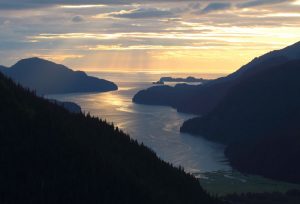
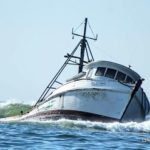


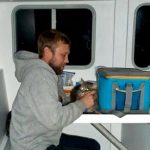

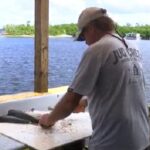
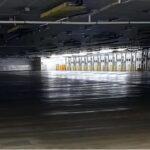



Leave a Reply